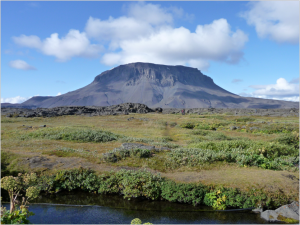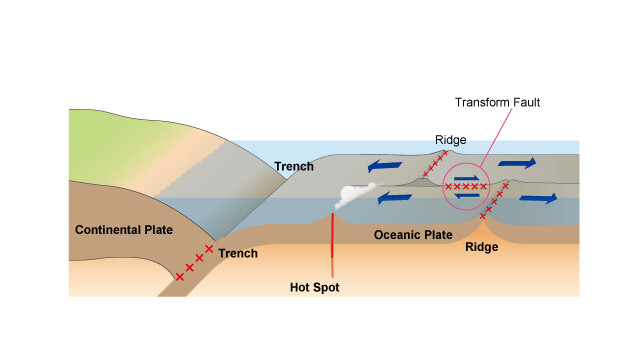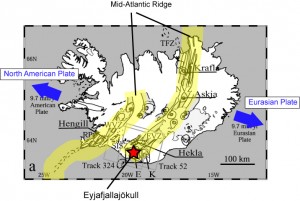Launched: April 20th, 2010
The volcano under the Eyjafjallajokull glacier has began to erupt on April 14th, affecting not only Iceland but also causing great confusion to air traffic due to the ashes. Following is a report on the eruption and its tectonic background.
Outreach and Public Relations Office/ Volcano Research Center
[Basic information of volcano]
- location : Southern Iceland (63.63N, 19.62W)
- summit elevation: 1666m
- width of summit caldera: 25.5km
- last eruption : Dec. 1821 – Jan. 1823
[Tectonics Background]
Iceland locates in the oceanic ridge, a place where plates are formed, and also on the ‘hot spot’, where deep mantle originated magma rises.
To the west of the island is the Eurasian Plate, and to the east is the North American Plate. Both plates are moving apart at the rate of approximately 10mm/yr. The Eyjafjallajokull volcano is located in the southern part of the island. (Figure 2)
[Volcanic eruption under the glacier]
When the magma rises under the thick glacier, it creates a tabletop-like volcano called the ‘table mountain’. The height to the summit regarded as the thickness of the glacier at the time of eruption.
Eruption from beneath the glacier mixes water with magma, which makes the ashes finer. (–>affect on airplanes and health)

Herdubreid Volcano (photo by Assistant Prof. KANEKO)
[ How it will affect aircrafts and our health]
One of the major damages of the volcanic ashes, is the affect to aircrafts.
When the ashes are taken into the aircraft engine, it will melt in the combustion chamber, stick to turbine vanes as they cool down suddenly, clogging and shutting down the engine. There has been past incidents where aircrafts of British Airways and KLM flew through ashes over the volcanoes of Indonesia and Alaska, having all four engines stop. There has been a report about engine troubles with the eruption of Miyake-jima, in 2000.
Even if you are not flying, with fine particles of ashes falling, there could be some minor danger to human health. If there is an apparent ash fall, wearing masks and careful attention to contact lenses should be necessary in order to protect your respiratory system and eyes.

